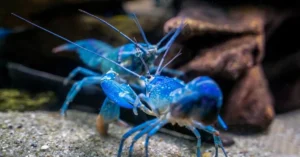Honey bears are among the most intriguing mammals on Earth. Often misunderstood, these elusive animals are not only famous for their sweet tooth but also for their critical role in ecosystems. Known scientifically as sun bears (Helarctos malayanus), they get their nickname from their fondness for honey. In this article, we’ll explore the biology, habits, and conservation efforts surrounding honey bears, while debunking myths and showcasing why these animals matter in our world today.
What Are Honey Bears?
Honey bears, more accurately known as sun bears, are the smallest members of the bear family (Ursidae). Native to Southeast Asia, these animals are characterized by their short black fur, long tongues, and a distinctive golden crescent shape on their chest, which gives rise to their alternate name.
They are arboreal, nocturnal, and rarely seen, contributing to their mysterious aura in the wild. The term “honey bear” is also sometimes used to refer to kinkajous, tree-dwelling mammals from Central and South America, but for this article, we focus on the sun bear.
Biological Traits and Adaptations
Unique Physical Characteristics
- Size: Adult sun bears typically weigh between 60–150 pounds and stand about 4 to 5 feet tall.
- Tongue: They have an exceptionally long tongue (up to 10 inches), perfect for licking honey from beehives.
- Paws and Claws: Strong claws help them climb trees and tear open logs or nests.
- Teeth: Unlike other bears, they have strong canines and jaws for cracking open nuts and termites.
Evolutionary Advantages
These adaptations allow honey bears to thrive in dense tropical forests. Their small size and excellent climbing abilities help them avoid predators and reach food sources others can’t.
Diet and the Love for Honey
Sun bears are omnivores, but their favorite treat is, unsurprisingly, honey. This preference earns them their “honey bear” nickname. Their diet typically includes:
- Honey and beehives
- Fruits (especially figs and bananas)
- Insects and larvae
- Small birds or rodents
- Leaves and roots
Their foraging behavior is essential in seed dispersion and controlling insect populations.
Habitat and Geographic Distribution
Honey bears inhabit the tropical rainforests of:
- Malaysia
- Thailand
- Indonesia (Sumatra and Borneo)
- Laos and Cambodia
- Myanmar and Vietnam
They are solitary and need large territories to find sufficient food, which makes them vulnerable to habitat fragmentation
Behavior and Social Structure
Solitary Yet Strategic
Unlike more social animals, sun bears are solitary except during mating season or when mothers are raising cubs.
- Communication: They use grunts, roars, and snorting sounds.
- Territorial Marking: They mark trees with scent and claw marks.
- Sleeping Habits: Known for building “day beds” in trees made from twigs and leaves.
Breeding and Lifespan
- Gestation: 95 to 240 days depending on delayed implantation.
- Cubs: Usually 1–2 born, blind and helpless.
- Lifespan: 20–25 years in the wild; up to 30+ in captivity.
Conservation Status and Threats
Honey bears are classified as Vulnerable by the IUCN Red List.
Major Threats
- Deforestation: Palm oil plantations have devastated their habitats.
- Poaching: Hunted for their bile, claws, and meat.
- Illegal Pet Trade: Cubs are often sold as exotic pets.
- Human Conflict: As their habitat shrinks, encounters with humans increase, often fatally for the bear.
Conservation Efforts
- Protected areas like Danum Valley Conservation Area (Malaysia).
- Anti-poaching initiatives.
- Rehabilitation centers in Borneo and Sumatra.
- Awareness campaigns about palm oil and ethical sourcing.
Why Honey Bears Matter Ecologically
Honey bears play a vital ecological role in:
- Seed Dispersal: Their fruit-heavy diet helps regenerate forest biodiversity.
- Pest Control: Feeding on termites helps control pests.
- Indicator Species: Their presence signals a healthy forest ecosystem.
Protecting honey bears helps safeguard broader biodiversity and forest health.
How You Can Help Save Honey Bears
Actionable Steps
- Donate to organizations like Borneo Sun Bear Conservation Centre (BSBCC).
- Avoid palm oil or choose certified sustainable sources.
- Support ecotourism that respects wildlife.
- Educate others about honey bears and their plight.
- Adopt a sun bear through verified wildlife programs.
Even small actions, when multiplied, can lead to impactful change for conservation.
Popular Culture and Honey Bears
The image of the honey bear is familiar in popular culture—think of the iconic honey bear-shaped squeeze bottles. However, this image can sometimes lead to misconceptions about the real animal.
Misconceptions:
- Not cuddly pets: Despite their appearance, sun bears are wild and can be dangerous.
- Not related to Pooh Bear: Fictional characters like Winnie the Pooh may contribute to underestimating the real threats they face.
Representation in media must be paired with education and conservation messaging.
Conclusion
Honey bears—or sun bears—are captivating creatures that do more than just raid beehives. They’re ecological stewards, symbolizing the delicate balance of rainforest ecosystems. But their existence is under threat, and it’s up to us—conscious individuals and global citizens—to make choices that support their survival.
Through awareness, advocacy, and action, we can ensure that future generations experience the wonder of honey bears not in textbooks alone, but in thriving, protected forests.
FAQs
Q1: Are honey bears the same as sun bears?
Yes. “Honey bear” is a nickname for the sun bear, derived from its love of honey.
Q2: Do honey bears pose a threat to humans?
Generally no, unless threatened. They are shy and prefer to avoid humans.
Q3: Can honey bears be kept as pets?
Absolutely not. They are wild animals and belong in their natural habitat.
Q4: Why are honey bears important to the ecosystem?
They help with seed dispersal and insect population control, both vital for forest health.
Q5: What’s the best way to help honey bears?
Support conservation efforts, avoid palm oil, and spread awareness.









